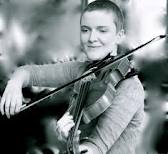Hello Friends,
It is my please to introduce my colleague and friend, Suzannah Scott-Moncrief, MA, MT-BC, LCAT. Thanks so much Suzannah for sharing your knowledge and expertise. I really appreciate your contribution to this blog!
BUILDING A HEALTHY RELATIONSHIP TO MUSIC
As a psychodynamically-oriented music psychotherapist, I am constantly considering the client-therapist relationship, the musical processes that develop between us, and the counter-transferential material that emerges, as a central component in the client’s growth. However, in large part due to my own personal and transformative experiences in Guided Imagery and Music, it turns out that the relationship that I am most interested in right now, is the relationship between the client and the music. The more I work with both active and receptive methods of music therapy, the more I’m convinced that my primary role is to bring a person into a deeper relationship with music. And, as I understand it, the process of coming into relationship with music parallels a client’s very journey toward health.
So, here’s my concern about the assumptions we make about music therapy: In our profession I see a tendency to promote music therapy with the claim that people easily and naturally engage in music experiences. (No doubt we have all experienced that one client who thrives in the music, often in stark contrast to other areas of their lives.) But I would argue that the majority of my clients over the years have struggled to enter into the music with ease. Much of our work consists of making the therapy environment – the relationship, and the experiences – safe enough for the client to engage in some kind of basic way with the music. Whether it’s a client who is ashamed of making a “wrong” sound, or a client who doesn’t sustain the music beyond a minute in length before being distracted, or a client who talks all the way through a fellow group-member’s music, many clients don’t find being in music as easy and natural as we like to advertise.
The following are just a few examples of things that prevent our clients from experiencing the music, deeply:
• Illness (e.g. the client with autism who struggles with relating to the therapist’s music);
• Words (e.g. the client who is good about intellectualizing their experiences but can’t connect easily to their feeling world);
• Compulsions (e.g. the client who plays in a reflexive, unintentional manner or as a form of self-stimulation);
• The inner critic (e.g. the client who can barely make a sound for fear of being judged);
• A previously damaged relationship with music (e.g. the musician client who has suffered from performance anxiety);
• Lack of listening skills (e.g. the client with ADHD);
• Trauma (e.g. the client who suffers flashbacks if the music is too loud or staccato).
As Kenneth Bruscia (1998) writes in Defining Music Therapy, “There are…times when clients are not emotionally ready to experience music to the fullest…Sometimes, even the best music presents a world of experience that a client cannot handle – physically, emotionally, or mentally.” (p. 95) And, just because a client is beating a drum, it doesn’t mean that they’re experiencing the music, fully, or in a meaningful way, right?
In my own work I like to envision myself and the music interacting like a relay-team. I hold the baton at first (the client-therapist relationship is primary in the client’s growth), and then I pass it off to the music (the client-music relationship becomes the primary agent of change). The first relationship that develops is the one between the therapist and the client – developing trust, developing a creative rapport, and learning how to make music together. The therapist’s job is about bringing the client into the music in deeper and deeper ways. Eventually, the therapist begins to hand off the relay-baton to the music, encouraging the client to relate, primarily, to the music. Lisa Summer talks about “getting out of the way of the music” in a GIM session: the client experiences it as an attitude of letting go to the music, and allowing themselves to become completely absorbed in the music experience. A deep relationship with music like this ultimately means a deepened relationship to the self.
When music therapy services terminate, I want to know that music therapy has deepened the client’s relationship to music and that music can continue to be a resource for them in their lives outside of the therapy room. A deep, fulfilling relationship with music can mean the difference between an anxious individual and an individual who can self-soothe. A deep, fulfilling relationship with music can mean the difference between an isolative, non-communicative teenager and a teenager who has something to share, socially. Or the difference between a traumatized adult with no feeling life and an adult who can identify their feelings, and experience tears and laughter without fear.
Ken Aigen proposed in his book, Music-Centered Music Therapy, that music therapy, like other therapies that treat deficits (e.g. speech therapy treats deficits in speech etc.), might be about treating a deficit of music in a person’s life. Let’s start thinking about this seriously – what do our clients need from us that they don’t already have, in order to come into the deepest, most transformative, receptive relationship to the music? And of course, this begs the question – how are we as clinicians relating to our own music? Are we allowing ourselves to relate to music in a deep and transformative way? How do we turn a musical deficit into a musical surplus for ourselves and our clients?
Suzannah Scott-Moncrieff MA, MT-BC, LCAT, has a private music psychotherapy practice in New York City working with adult individuals, couples, and groups as well as providing supervision for professional music therapists. She also facilitates music therapy for young adults with intellectual disabilities in a special education setting. Suzannah is adjunct faculty in the music therapy department at New York University, and a clinical supervisor for Level 1 and 2 Guided Imagery and Music trainees at Anna Maria College in Massachusetts. She was recently invited to speak on this subject of the client-music relationship at EWHA Womans University in Seoul, Korea and as keynote speaker at the Atlantic Association for Music Therapy in Canada. For more information you can email Suzannah at musictherapist@gmail.com, or visit her website at www.asoundspace.com.


Pingback:News » A Sound Space
Pingback:Relationship to Music » A Sound Space
Pingback:Relationship to Music » A Sound Space